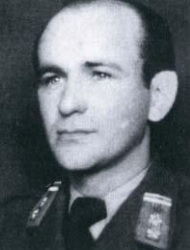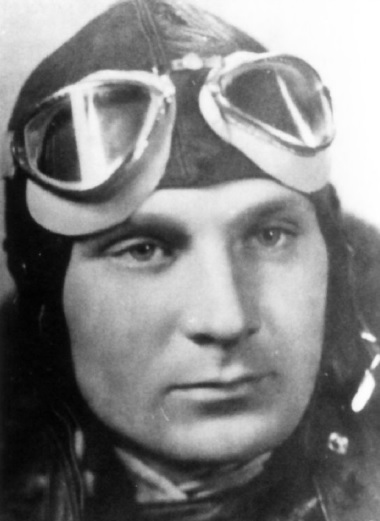Frantiek Brezina slipped on the bottom wing, but he was fortunate enough to keep his hands on the struts while his legs were dangling from the wing.
The public is not familiar with the history of the Slovak Air Force during World War Two. The most well-known aircraft used by the service throughout the conflict were Avia B-534s, Letov 328s, and subsequently Bf-109 “Emils” and “Gustavs.”
Despite the fact that the Slovak Air Force’s 1939 missions of biplanes were primarily assigned to escort German reconnaissance or bomber aircraft over Poland, close to Slovak boundaries, the Slovak Air Force was the only Luftwaffe ally to participate in the Poland campaign. The Slovak Air Force operated in the USSR until 1943 when Slovakia eventually joined its Axis allies in the invasion. Even against US bombers performing operations over Slovakia, the tiny nation was able to send a small fighter unit on one occasion. Slovak aircraft completed their World War II operations against Germany during the Slovak National Uprising (August–October 1944).
The Avia B-534 fighter aircraft and the Letov -328 reconnaissance aircraft were the two primary warplanes of the Slovak Air Force during the invasion of the USSR. Both aircraft were obsolete, but Slovakia lacked the funds to purchase new ones, and Germany refused to give it any new planes since its pilots were not regarded as “trustworthy” in Germany’s eyes—largely because of the high rate of defections. Nevertheless, the 1st Observation Wing, composed of 30 -328s, and the 2nd Fighter Wing, composed of 33 B-534s, were established during Operation Barbarossa.
The Courier Wing, the last wing, was flying a Praga E-39, E-241, and a Stinson Reliant. The majority of their early missions consisted of either striking ground columns of fleeing Soviet soldiers or escorting German reconnaissance aircraft across Soviet lines. Three squadrons made up the fighter wing (11; 12 and 13). Later, squadron 11 retreated to Slovakia in order to defend the country’s airspace as it had no aircraft there. As the front moved deeper into the Soviet Union, the rest squadrons frequently switched airfields.

Squadron 13 relocated to Tulczyn on July 25. A swarm of three Avia B-534s led by L. Hodra, F. Brezina, and. Martiš took off shortly after the squadron touched down with the mission to escort the Luftwaffe’s Henschel Hs-126 reconnaissance aircraft. The aircraft came under rapid fire from anti-aircraft cannons and machine guns after crossing the Soviet line. Brezina was forced to make an emergency landing on a road frequented by Soviet soldiers during the withdrawal 16 kilometers behind the Soviet line due to damage to his aircraft.
The Red Army opened fire on the aircraft as well as the pilot, who was forced to hide behind the damaged Avia. The Avia B-534 was in danger of having Soviet troops arrive shortly, putting the pilot in danger of capture or even execution.
Martiš observed Brezina’s emergency landing. He indicated to swarm commander Hodra and immediately tried to land next to the shot-down Brezina, but the Soviet anti-aircraft fire prevented him from landing. He repeatedly attacked Soviet forces with the four 7.92 mm vz.30 machine guns, the standard Avia B-534-IV armament, in order to buy time before landing and rolling up adjacent to Brezina.
Brezina leaped onto Martiš’s left bottom wing and grabbed the main struts. With Martiš in the pilot’s seat and Brezina holding the struts, the Avia took off under intense Soviet fire. The small biplane jolted due to the uneven ground, causing Brezina to slide on the bottom wing. Fortunately, he was still able to grip the struts with his arms even though his legs were swinging off the wing.

Brezina had a difficult time throughout the entire flight, despite its short duration. Brezina had to be carried on the wing of Martiš’s fighter as he attempted to fully escape the Soviet zone. Brezina was having trouble breathing because of the massive air rush, and he was in danger of going unconscious. Martiš slowed down the biplane once the aircraft cleared the Soviet lines, which enabled Brezina to once more stand up and hold the struts. The Avia B-534 safely landed back at Tulczyn after a brief delay, with Martiš at the controls and Brezina standing on the bottom wing.
The Minister of National Defense of Slovakia, general Ferdinand Čatloš, awarded the pilot Štefan Martiš with the medal ‘Za hrdinstvo 2. Stupňa’ (For Heroism – 2nd Class) and František Brezina with the medal ‘Za hrdinstvo 3. Stupňa’ (For Heroism – 3rd Class). Both men were also awarded Iron Cross, 2nd Class.

Later, both pilots became aces. Štefan Martiš was successful in downing five planes (1 Yakovlev Yak-1, 1 B-20 Boston, 3 Ilyushin Il-2, and 1 unconfirmed Spitfire), whereas Frantiek Brezina was successful in downing fourteen (5x Yakovlev Yak-1; 3x Ilyushin Il-2; 3x Polikarpov I-16; 1x I-153; 1x MiG-3; 1x B-20 Boston). They achieved their aerial victories while piloting “newer” Bf-109s from the Gustav and Emil series. Up until the arrival of “Emils,” B-534s remained the predominant Slovak fighters. Up to that point, Slovak Avias shot down six Soviet planes without having to deal with hostile aircraft shooting down their biplanes. Ján Režňák was the most successful of the top Slovak aces, shooting down 32 enemy aircraft while piloting new German aircraft.
Sources:
Kliment Ch. Slovenská armáda 1939-1945 [Slovak Army 1939-1945]. Mustang Ltd., 1996. ISBN 80-7191-132-1
Rajninec J. Slovenské letectvo 1 [Slovak Air Force 1]. Ministerstvo obrany Slovenskej republiky, 1997. ISBN 80-88842-09-3
Rajlich J.; Boshniakov S.; Mandjukov P. Slovakian and Bulgarian Aces of World War 2. Osprey Publishing, 2004. ISBN 978-1-84176-652-2


